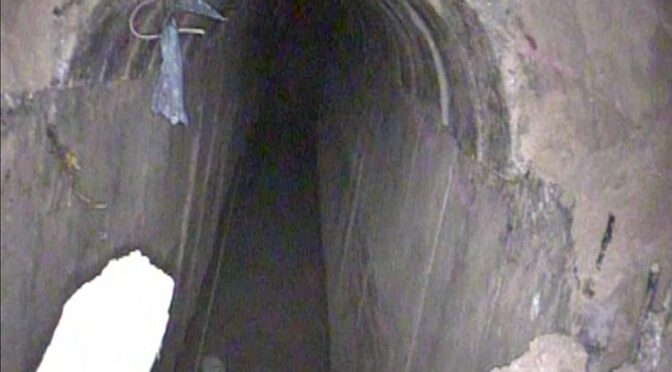Article published in The Daily Telegraph, 13 December 2023. © Richard Kemp
I was inside the Gaza Strip yesterday and witnessed two terrorist tunnels being destroyed with explosives by IDF engineers in Shejaiya. In the same area of Gaza City a short time later, the IDF suffered one of its deadliest single skirmishes since the ground offensive began, with nine soldiers of the Golani Brigade killed in a gun and explosives battle with terrorists.
Heavy fighting continues in the north and south of Gaza, both above ground and in Hamas’s extensive tunnel network, which – to give you a sense of scale – is assessed to be even more extensive than the London Underground’s 250 miles. The tunnels bring yet another incredibly formidable dimension to urban combat, which is itself among the most challenging of battle environments, characterised by particularly high casualty rates, especially among attacking forces.
I’ve been into those tunnels: they are heavily fortified, concrete lined and with lighting, electric power and air supply. Over two decades they have been constructed using vast sums of money, including international aid that should have been spent on civilian infrastructure, and costing the lives of many Gazans including dozens of children sent underground to work on them.
The IDF’s inexorable advance through Gaza both above and below ground has seen rocket launches into Israel dramatically reduced as terrorist freedom of action is choked off. That said, when I was in Shejaiya a volley was launched from further south, but it was knocked down by Israel’s Iron Dome before it could leave the sky over Gaza.
The terrorist command structure, too, is beginning to break down as senior leaders are killed, though the head of Hamas, Yahya Sinwar, and his henchmen probably remain underground somewhere in the south, no doubt with an eventual exit planned through tunnels beneath the border with Egypt. An increasing number of terrorists have been surrendering, which is an encouraging sign of plunging morale.
But there is still a lot of hard fighting ahead and Israel’s allies should be working to do what they can to further demoralise Hamas. Joe Biden’s false accusation against Israel yesterday of indiscriminate bombing, as well as hints that America’s support is beginning to wane, will have exactly the opposite effect.
The IDF’s inexorable advance through Gaza both above and below ground has seen rocket launches into Israel dramatically reduced as terrorist freedom of action is choked off. That said, when I was in Shejaiya a volley was launched from further south, but it was knocked down by Israel’s Iron Dome before it could leave the sky over Gaza.
The terrorist command structure, too, is beginning to break down as senior leaders are killed, though the head of Hamas, Yahya Sinwar, and his henchmen probably remain underground somewhere in the south, no doubt with an eventual exit planned through tunnels beneath the border with Egypt. An increasing number of terrorists have been surrendering, which is an encouraging sign of plunging morale.
But there is still a lot of hard fighting ahead and Israel’s allies should be working to do what they can to further demoralise Hamas. Joe Biden’s false accusation against Israel yesterday of indiscriminate bombing, as well as hints that America’s support is beginning to wane, will have exactly the opposite effect.
Image: Wikimedia Commons

